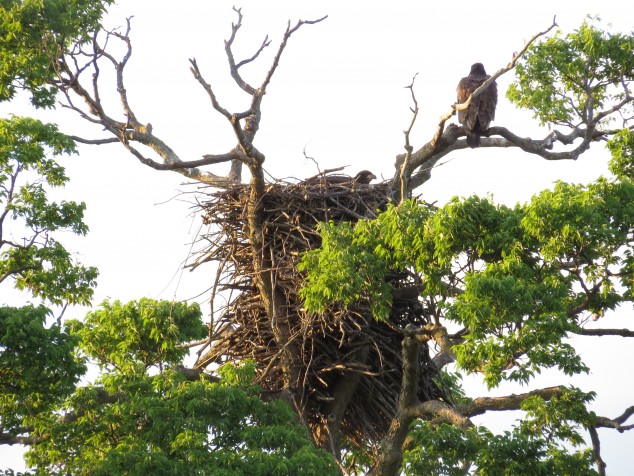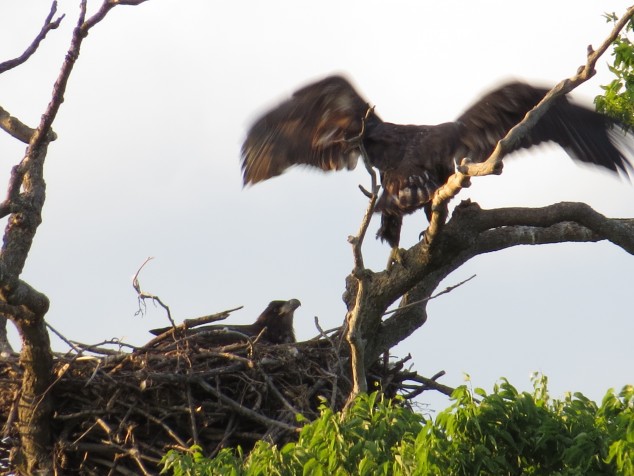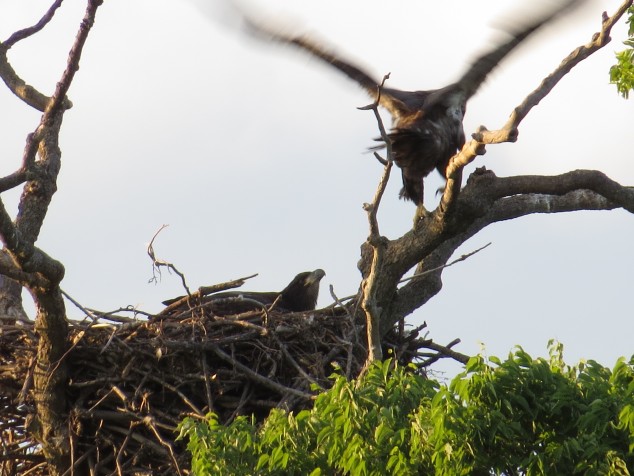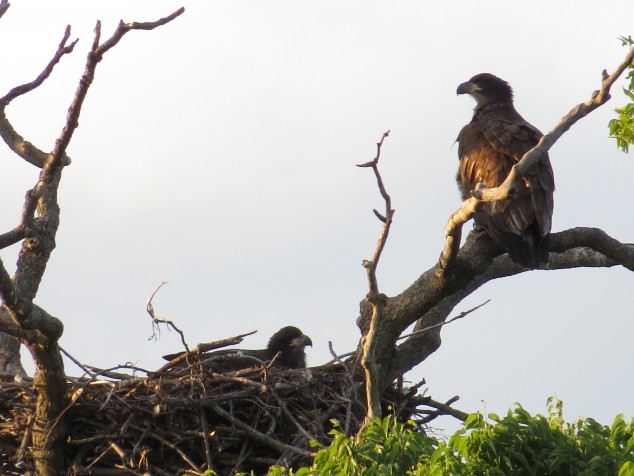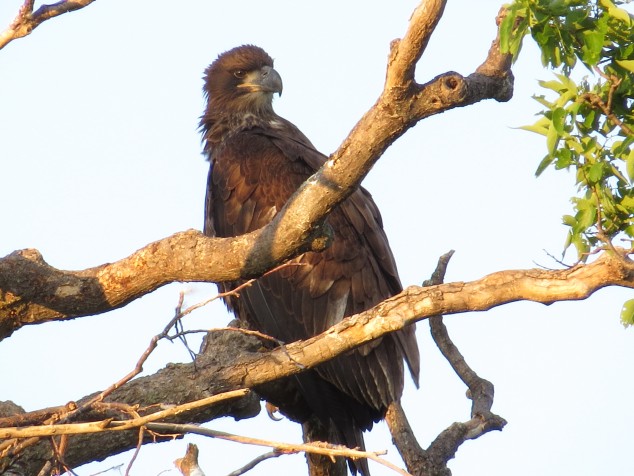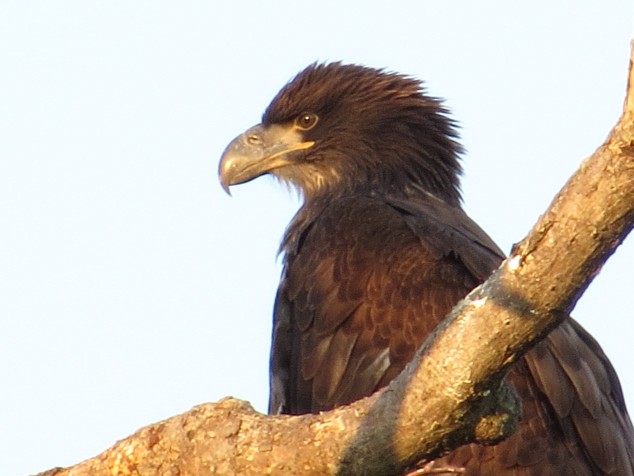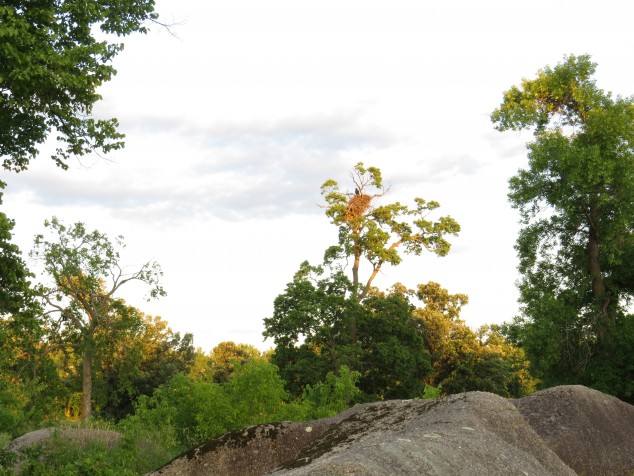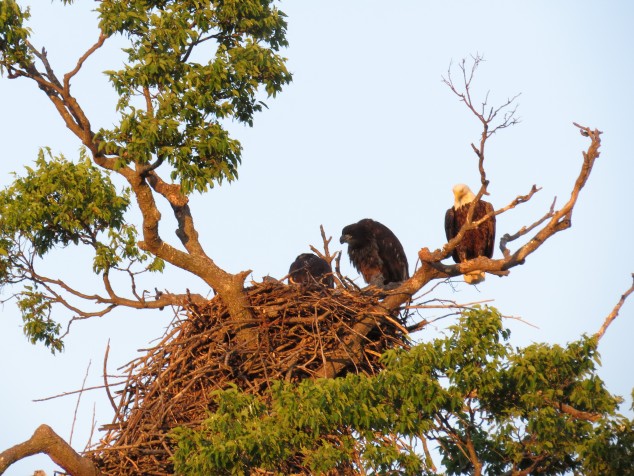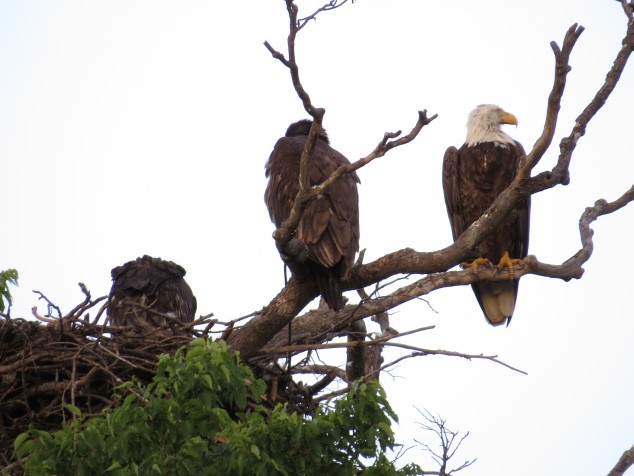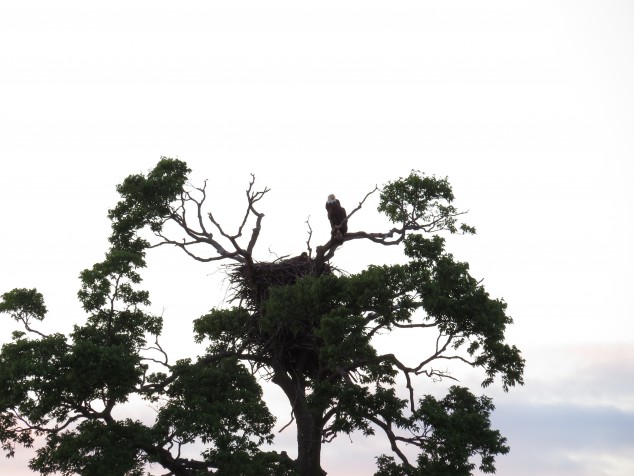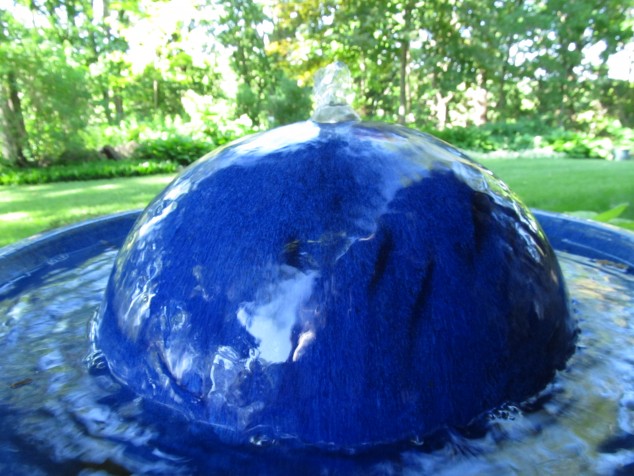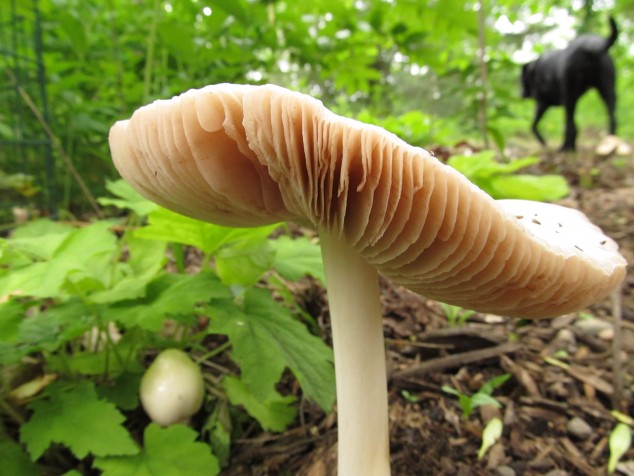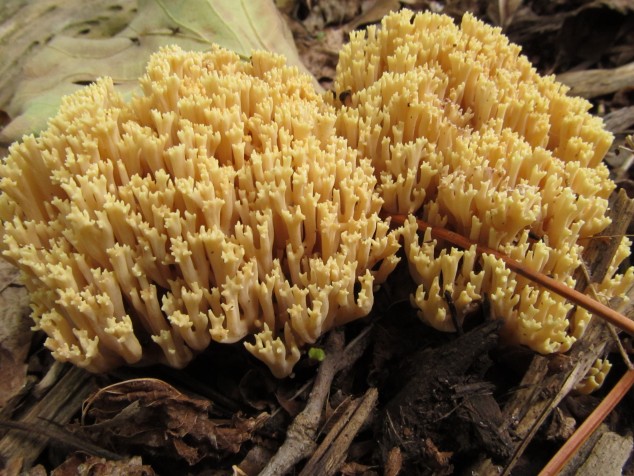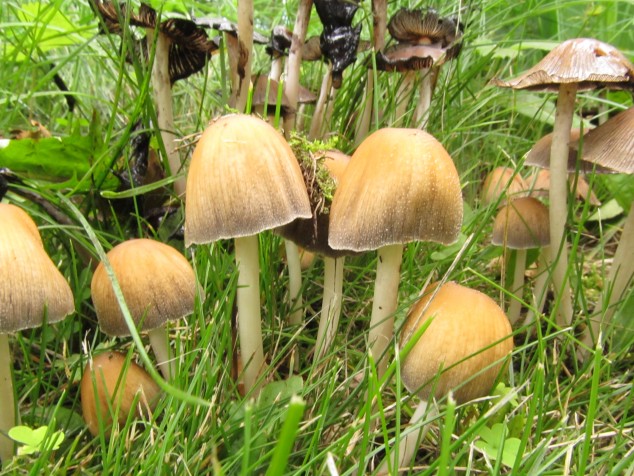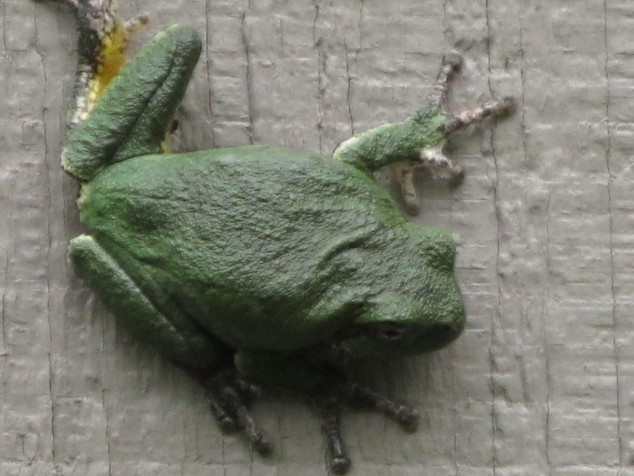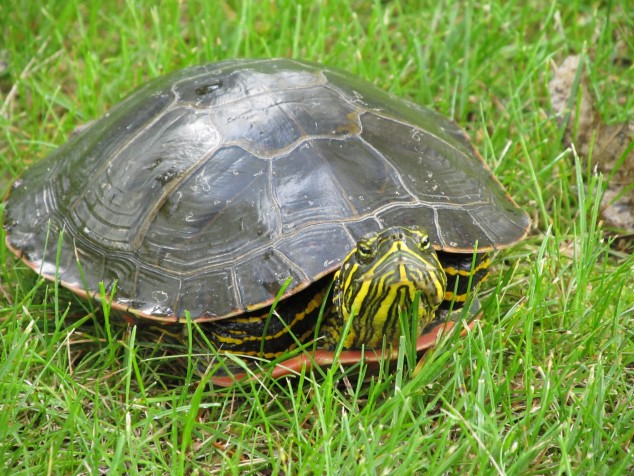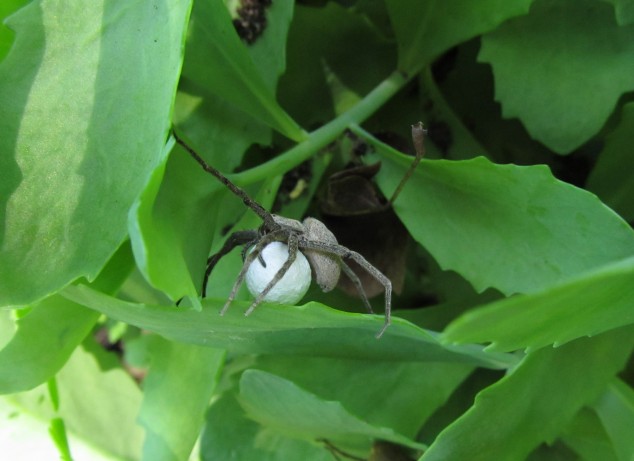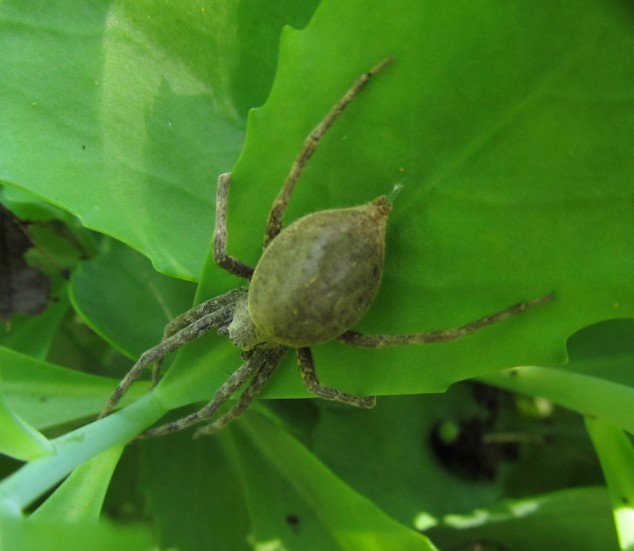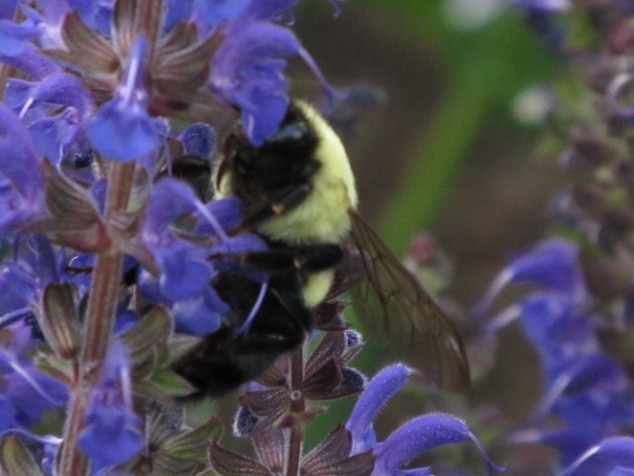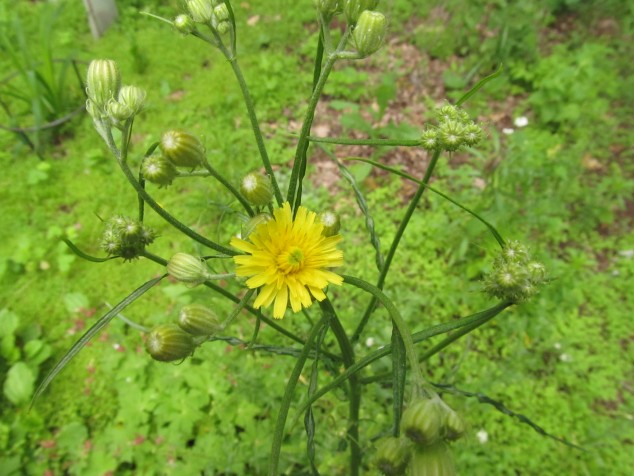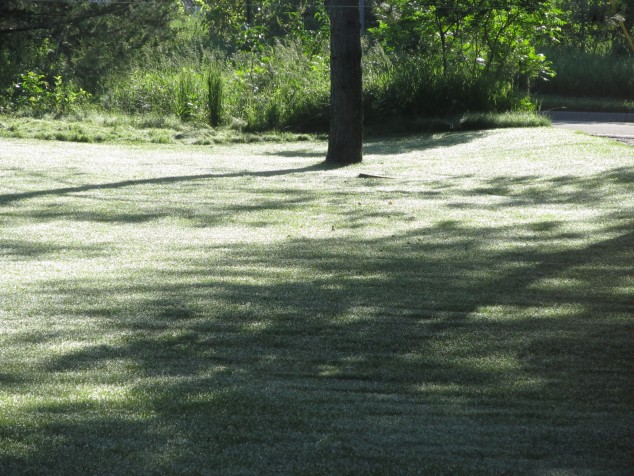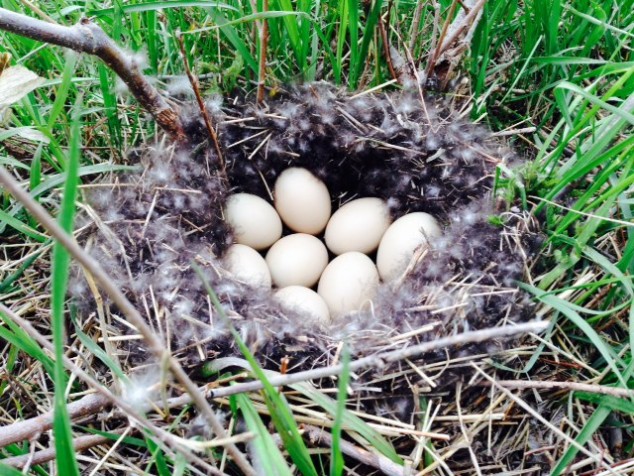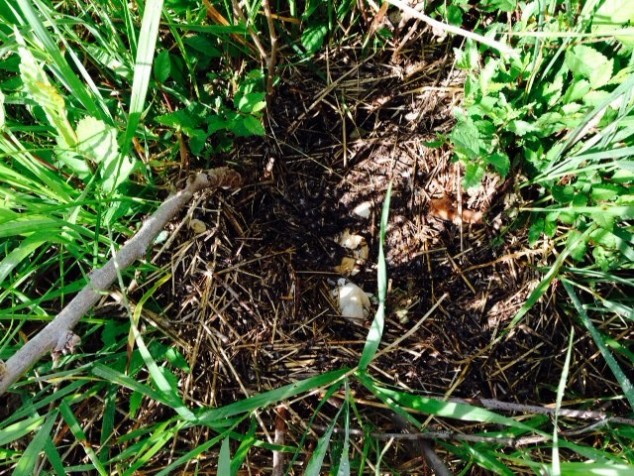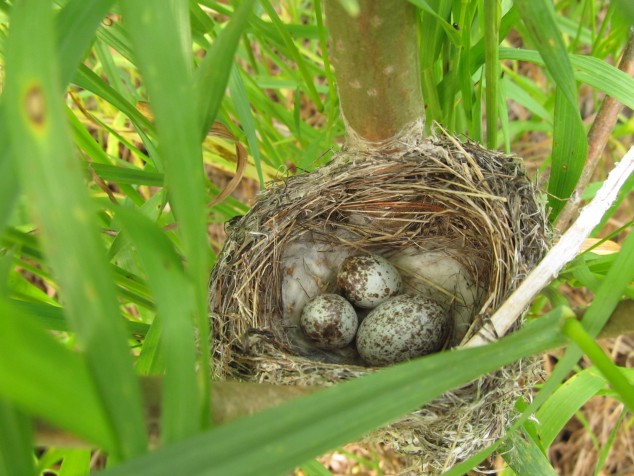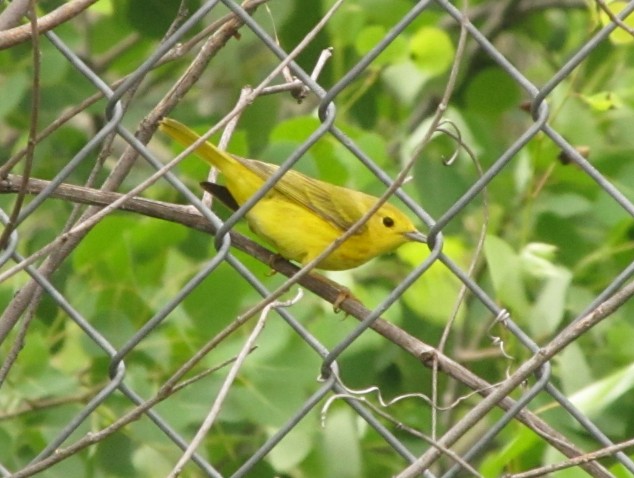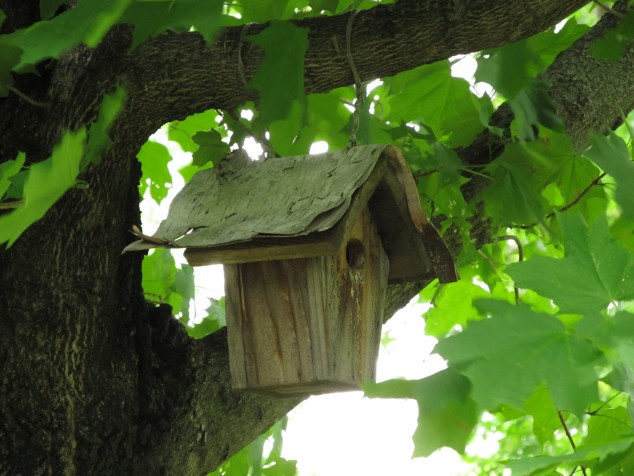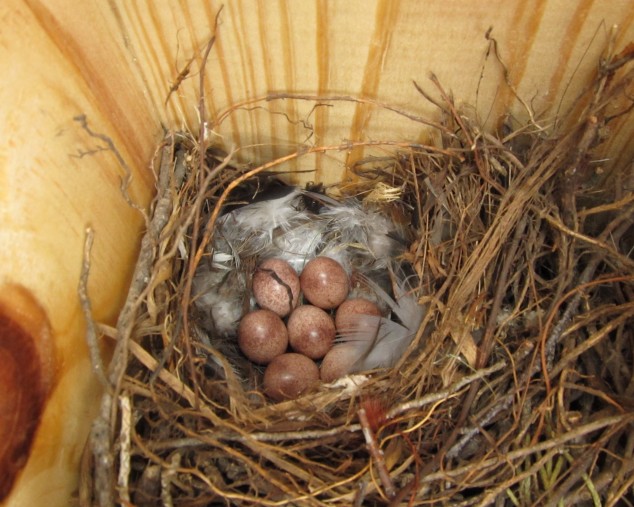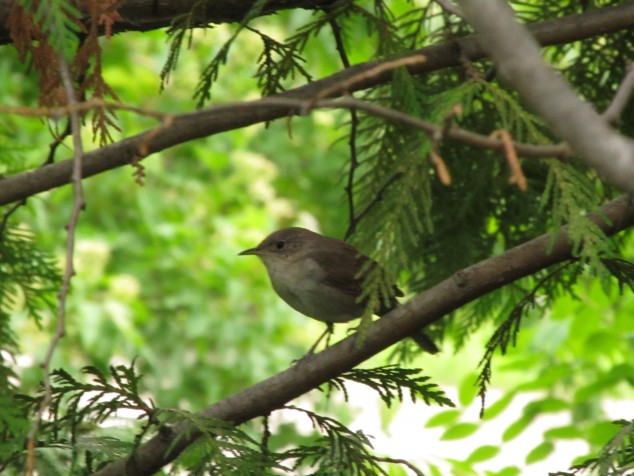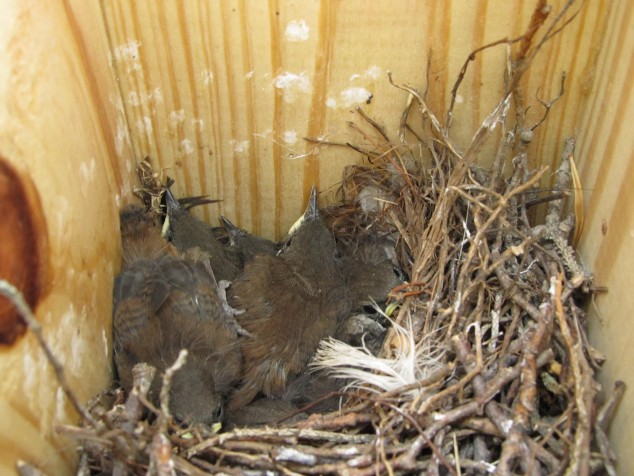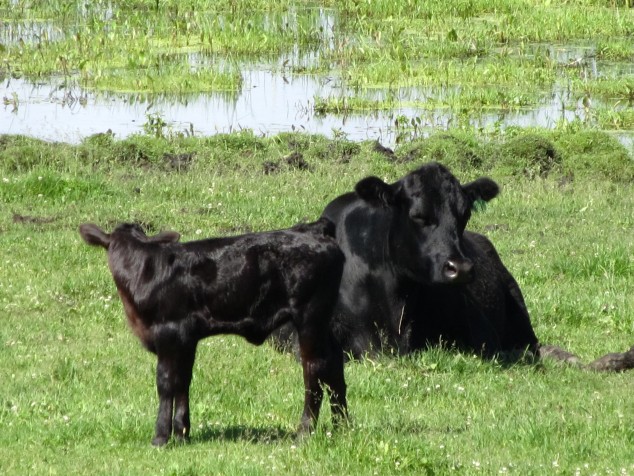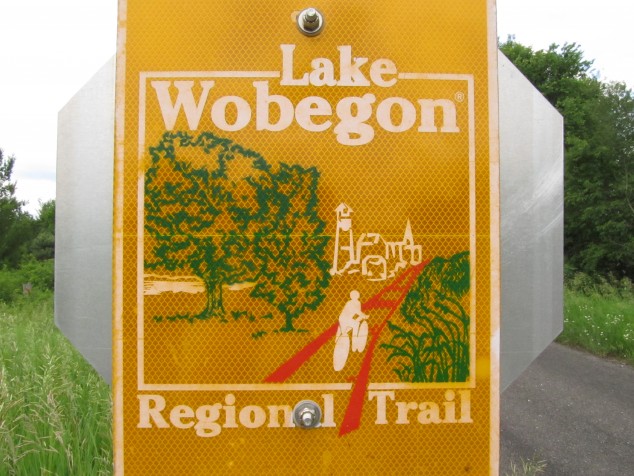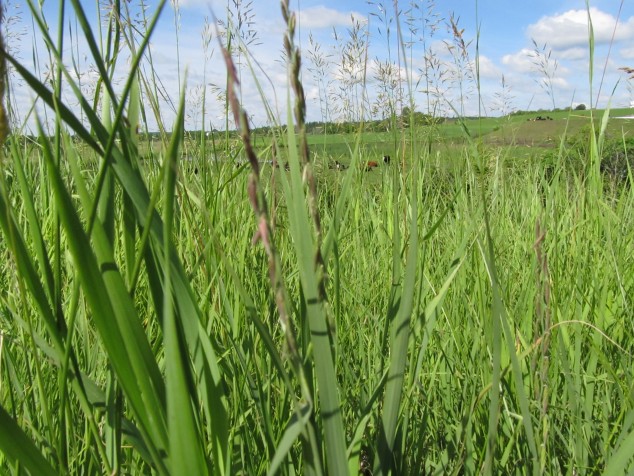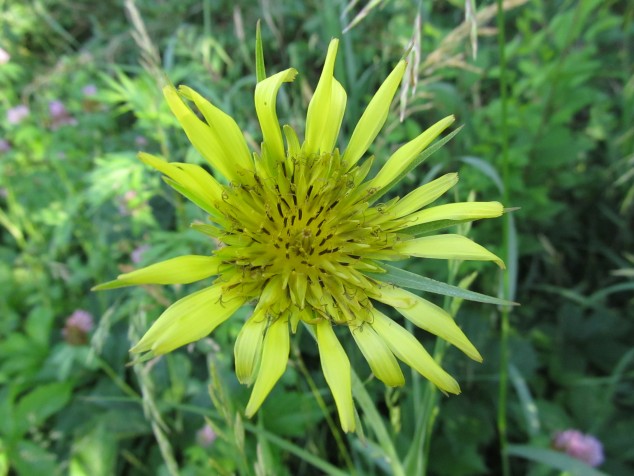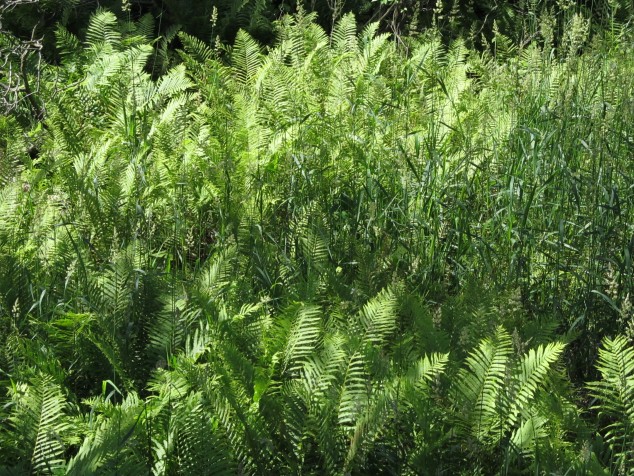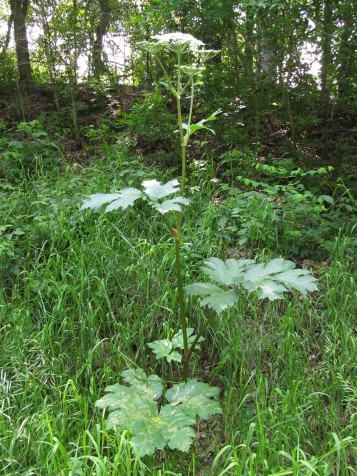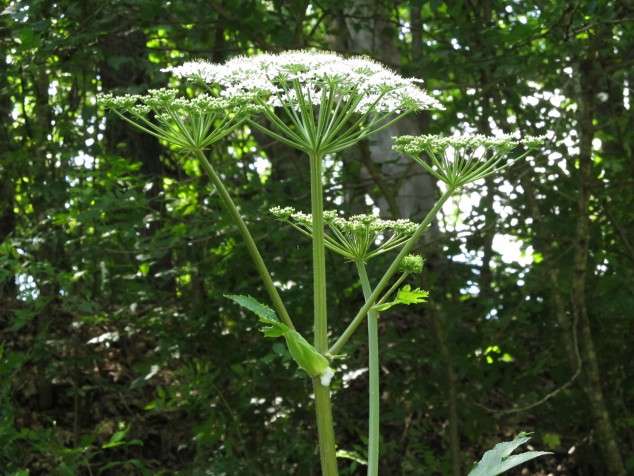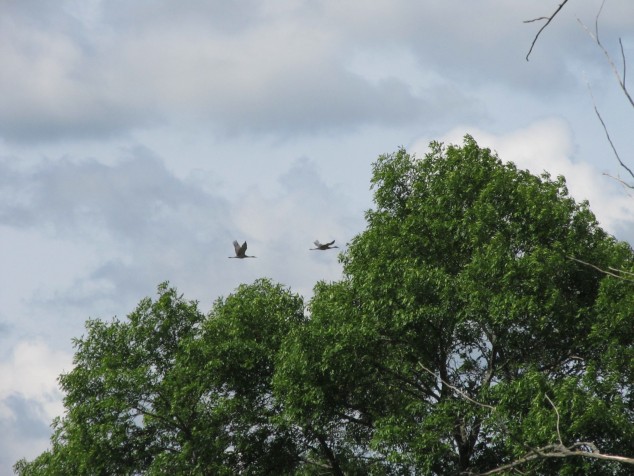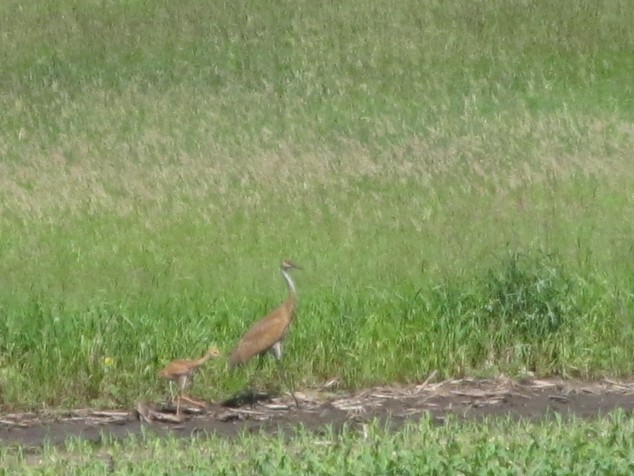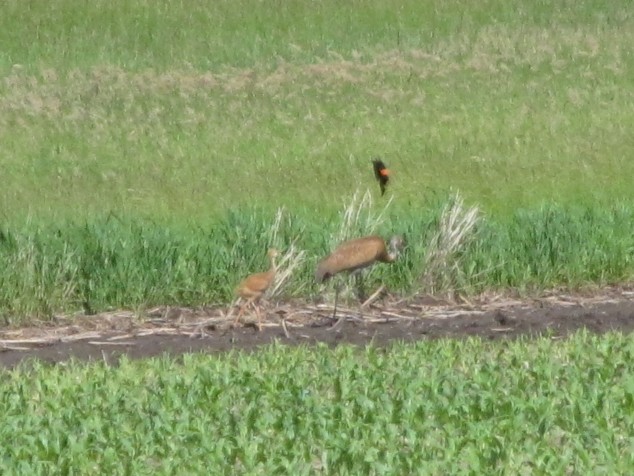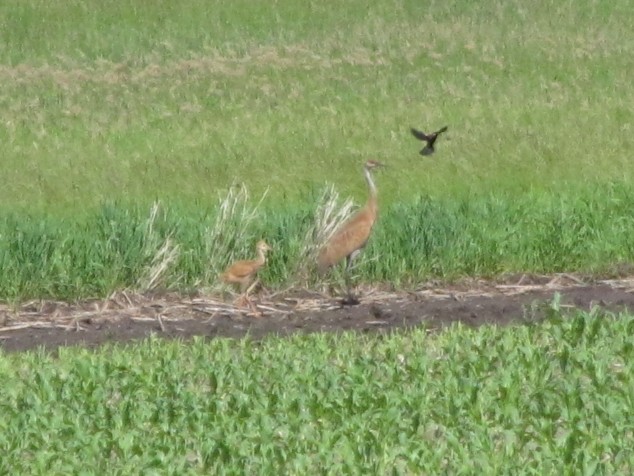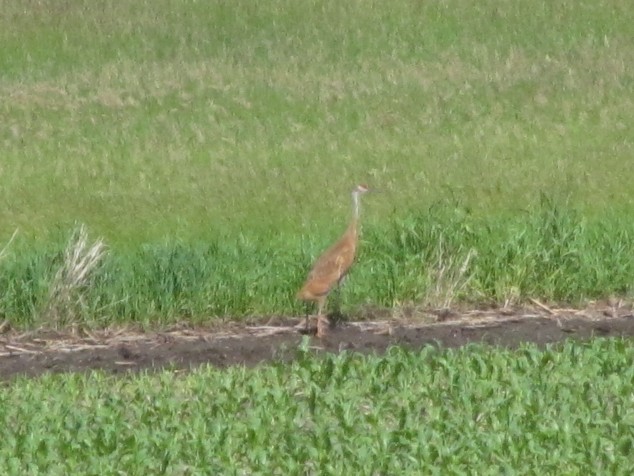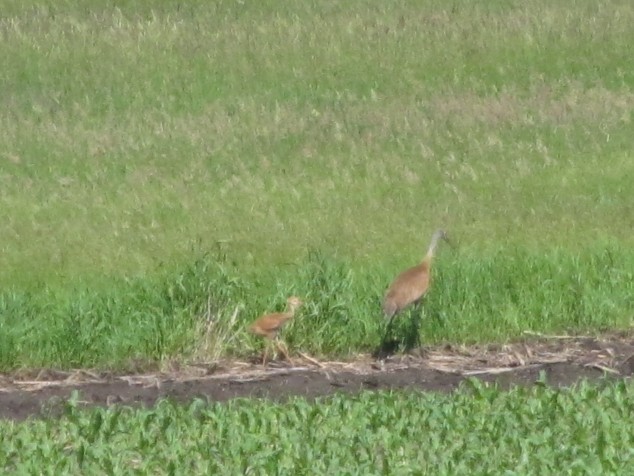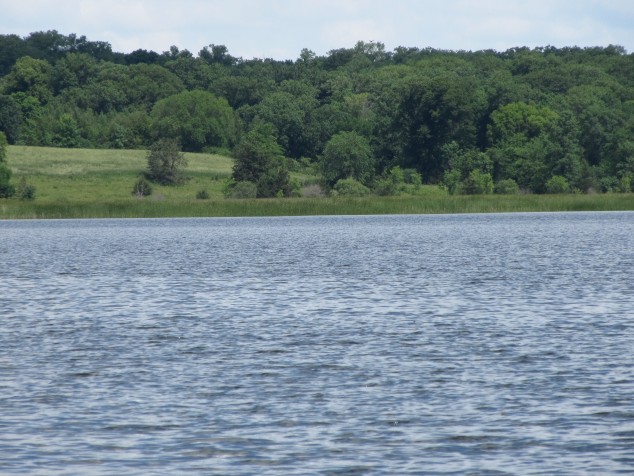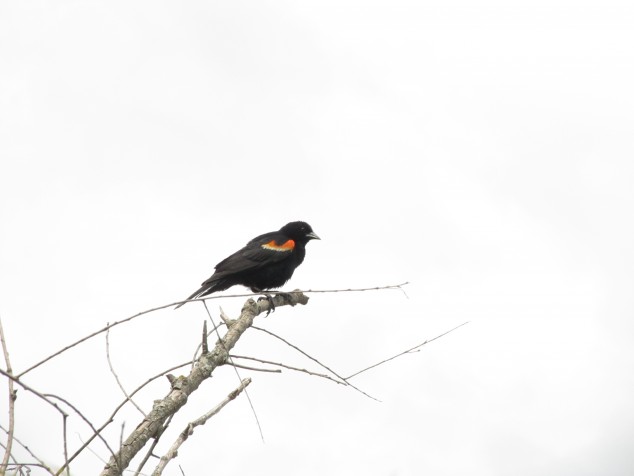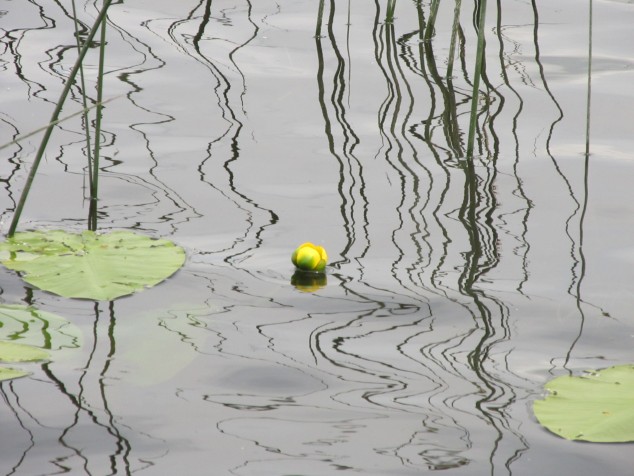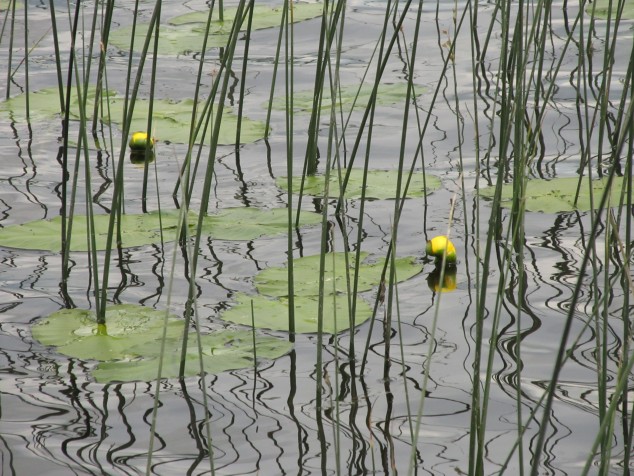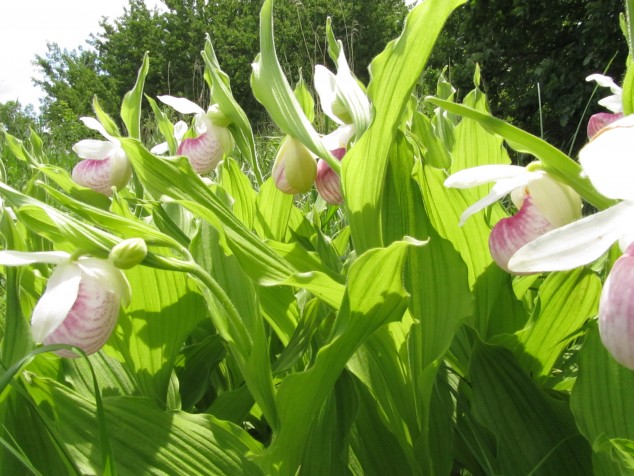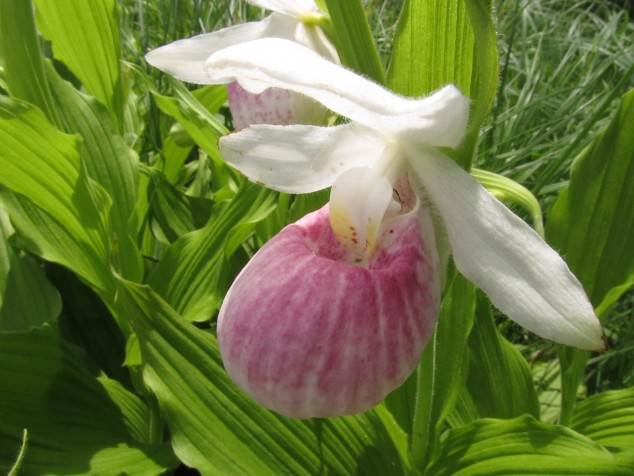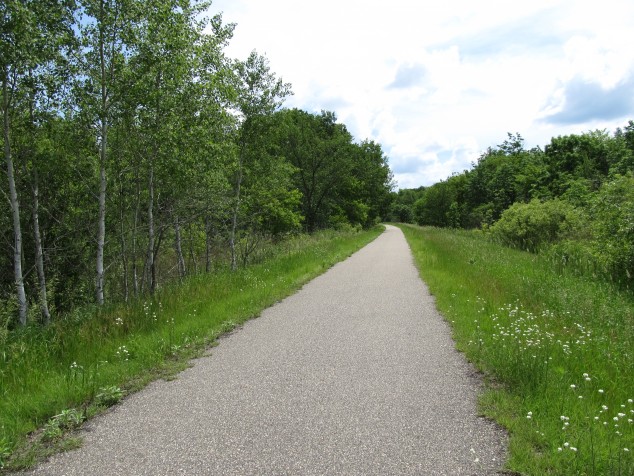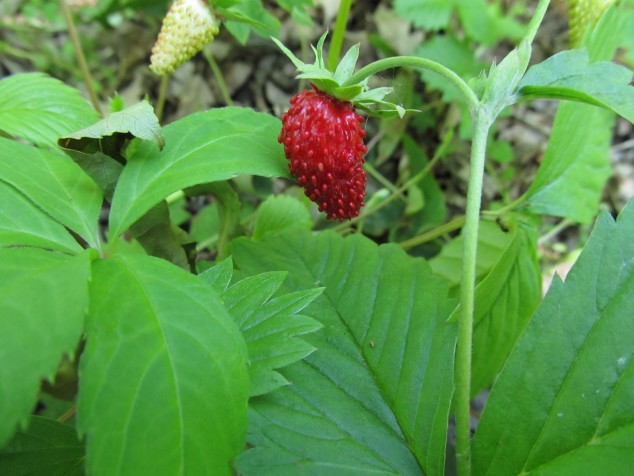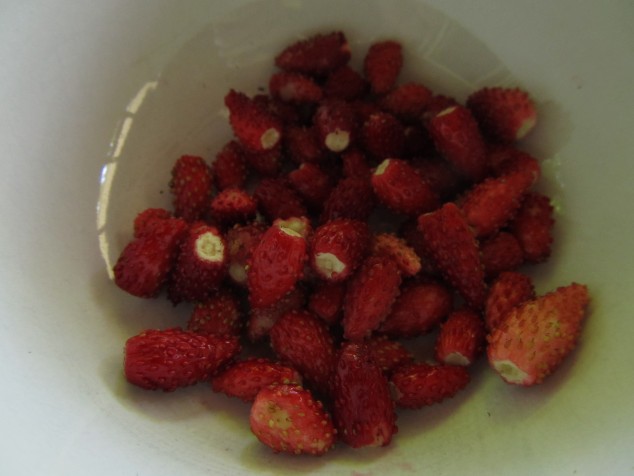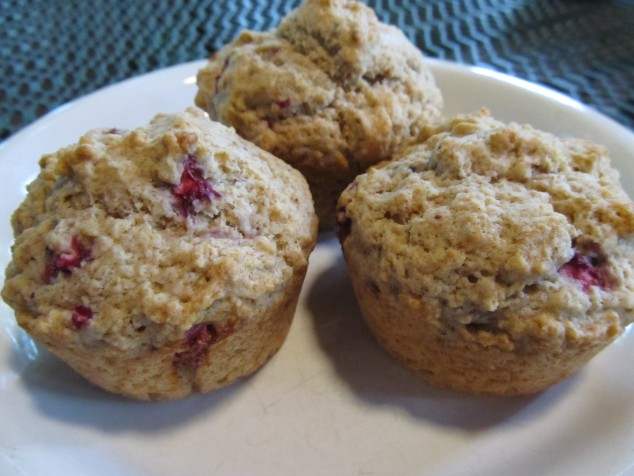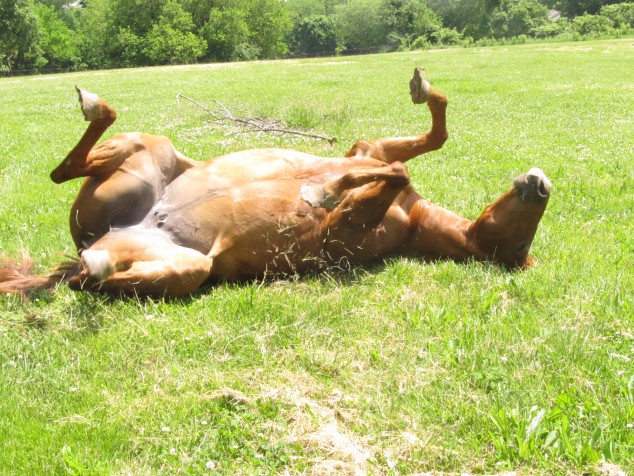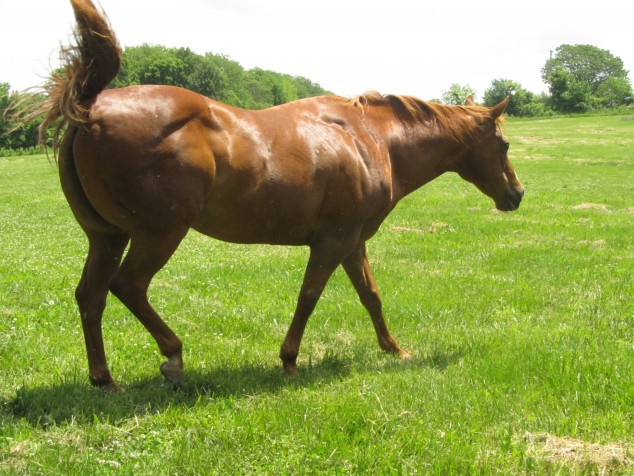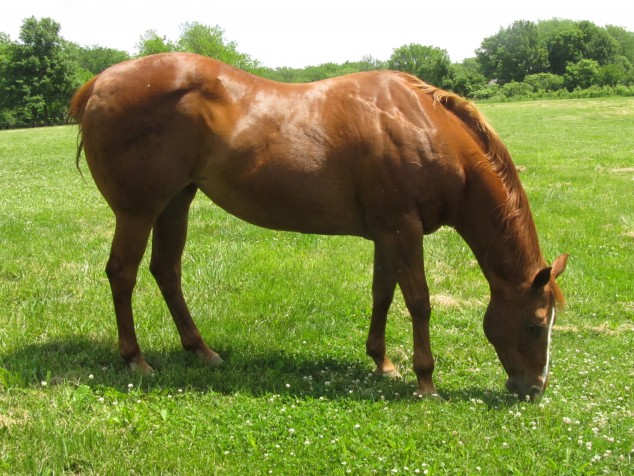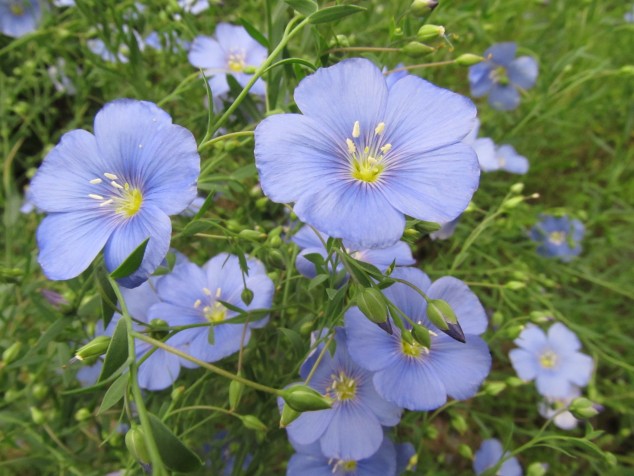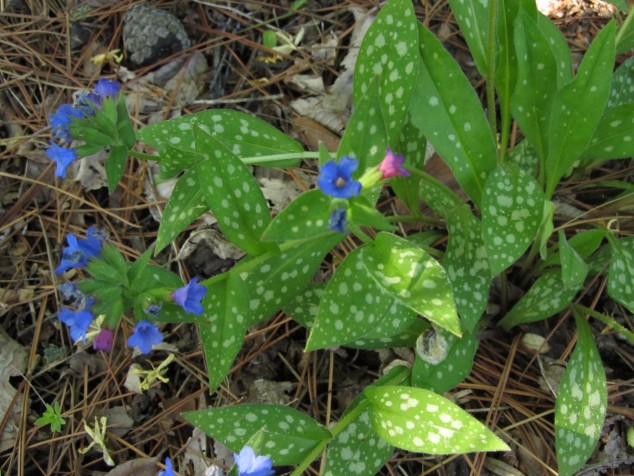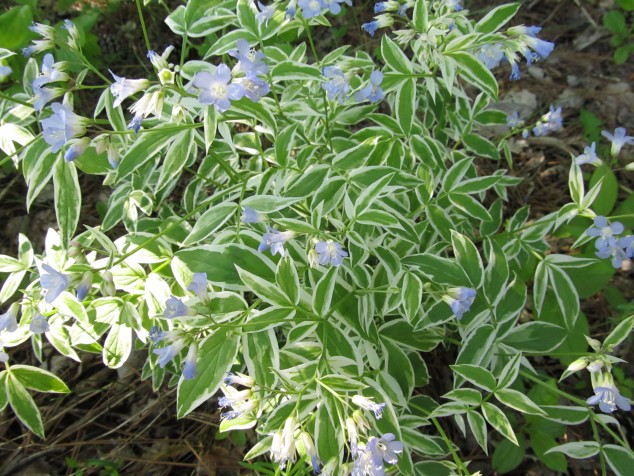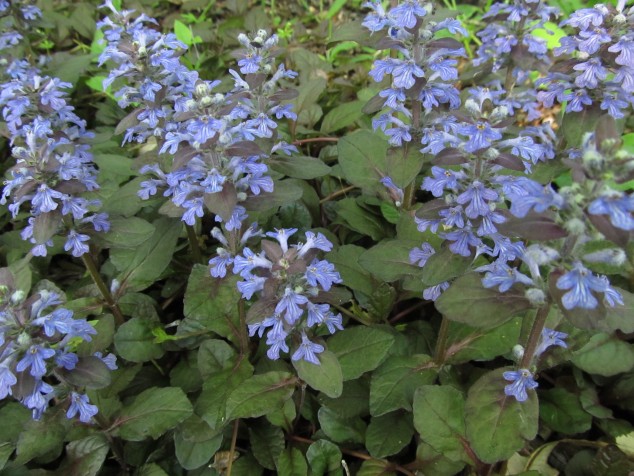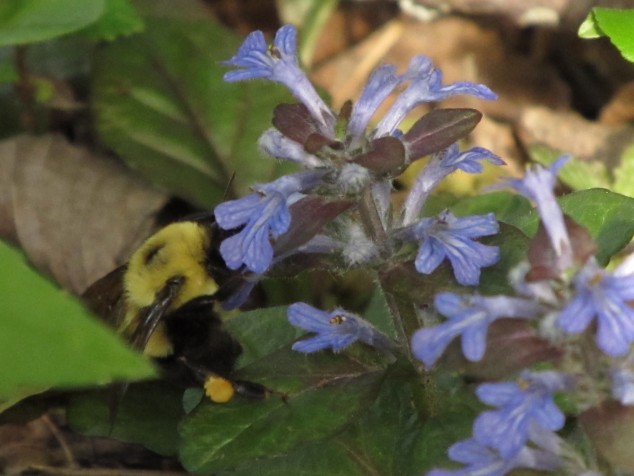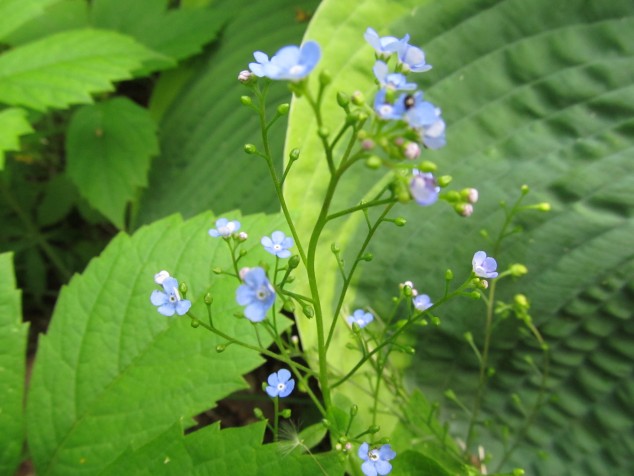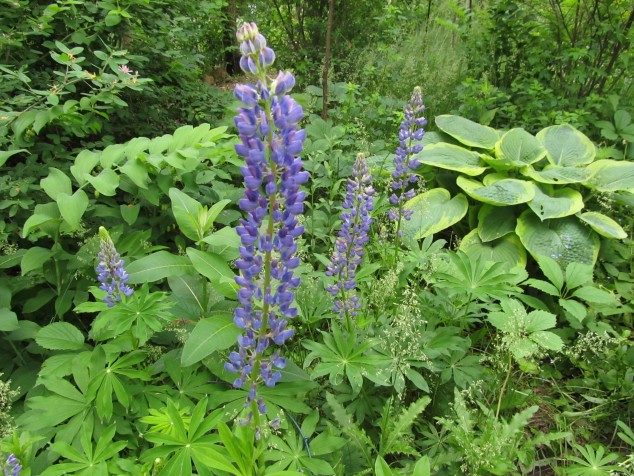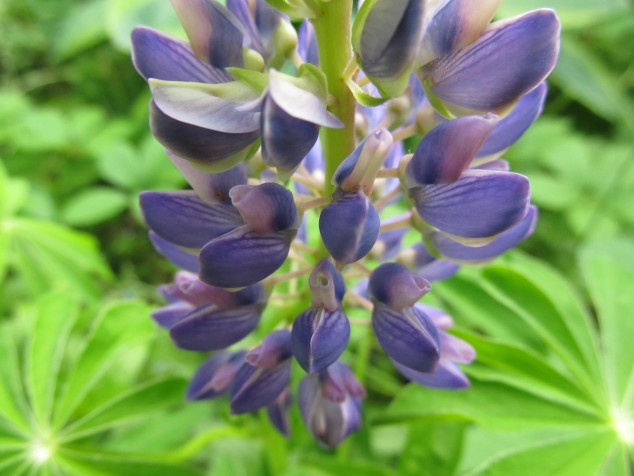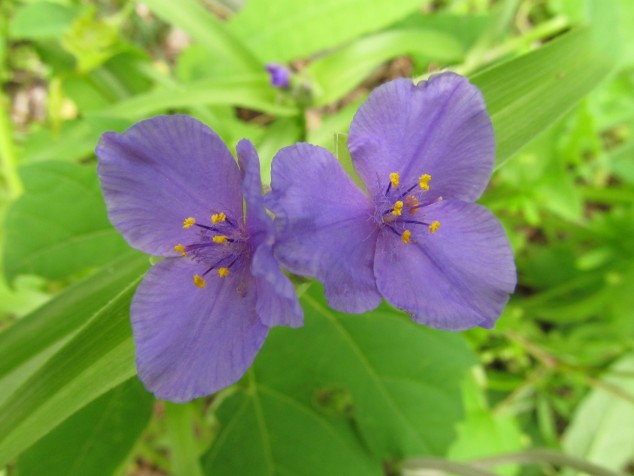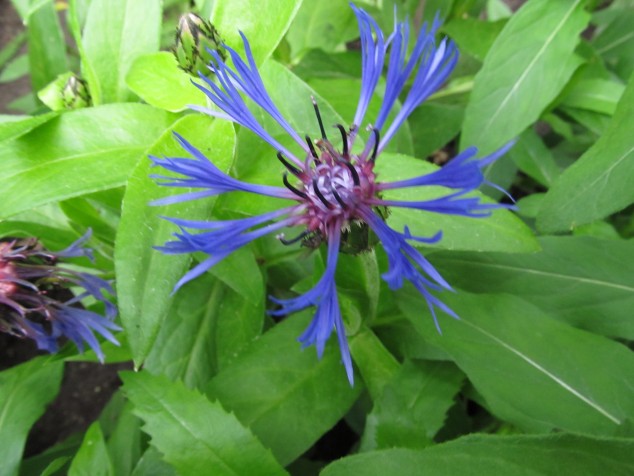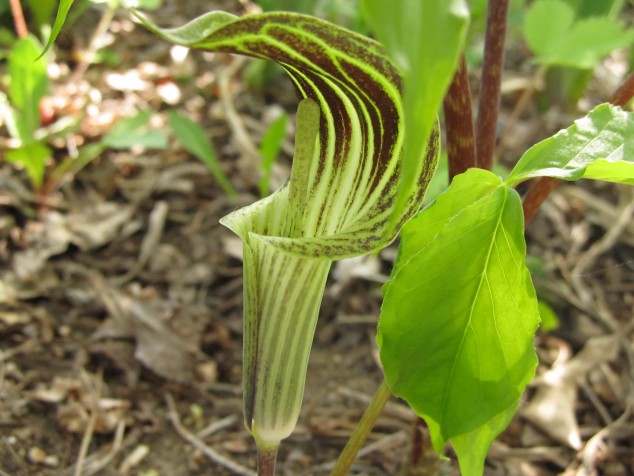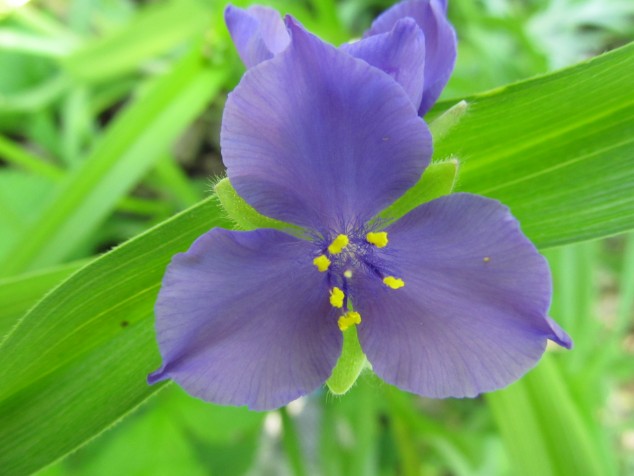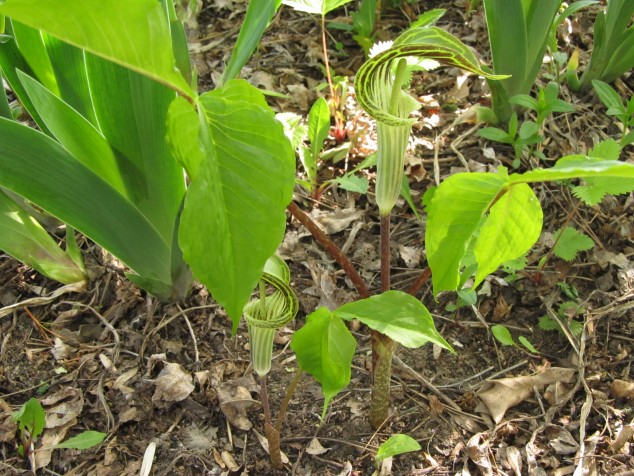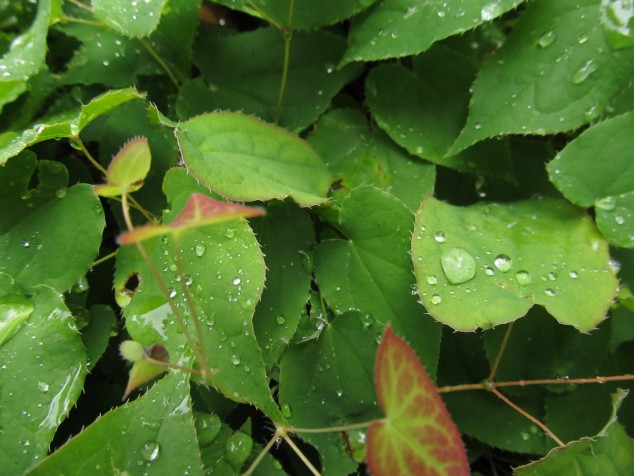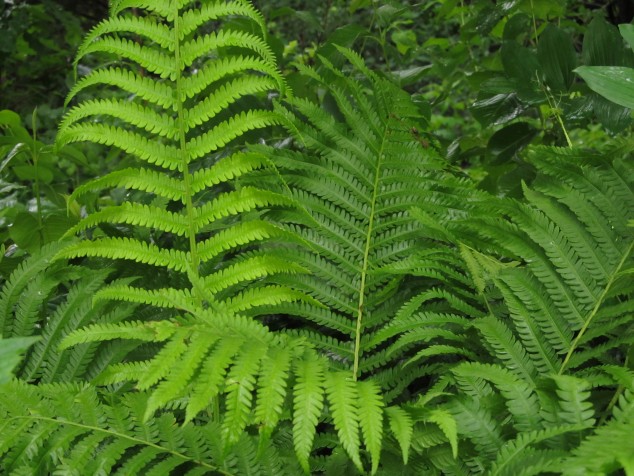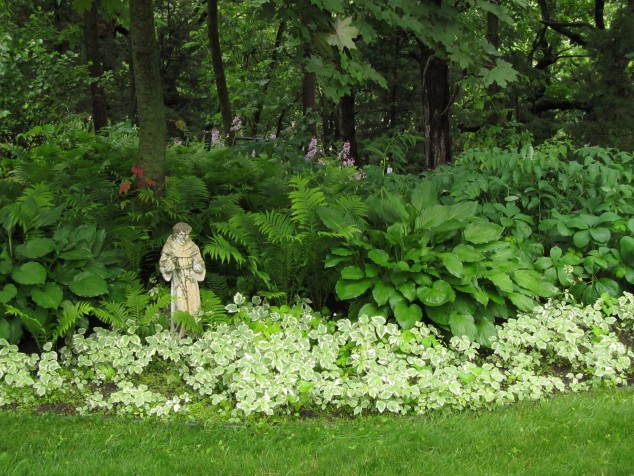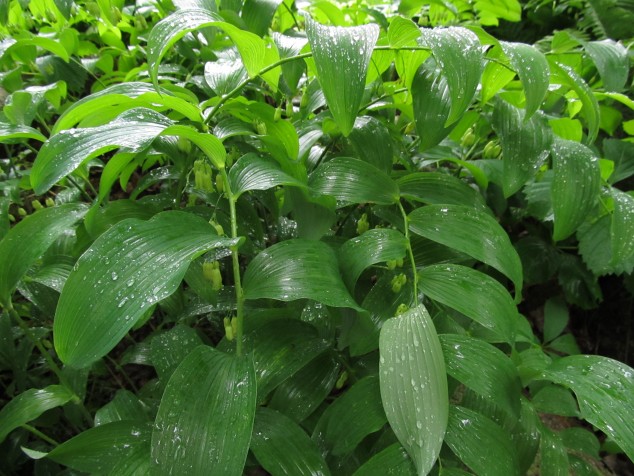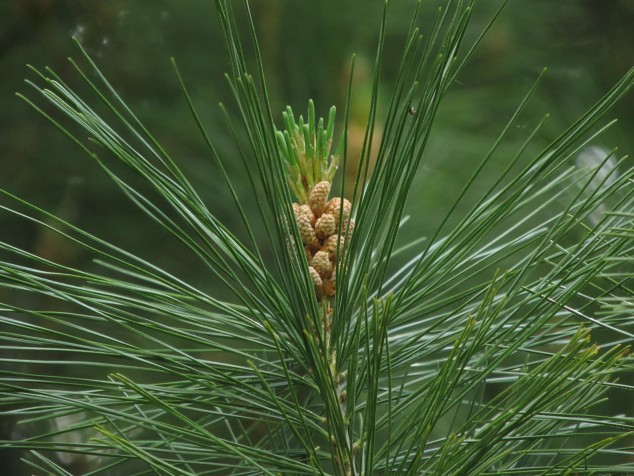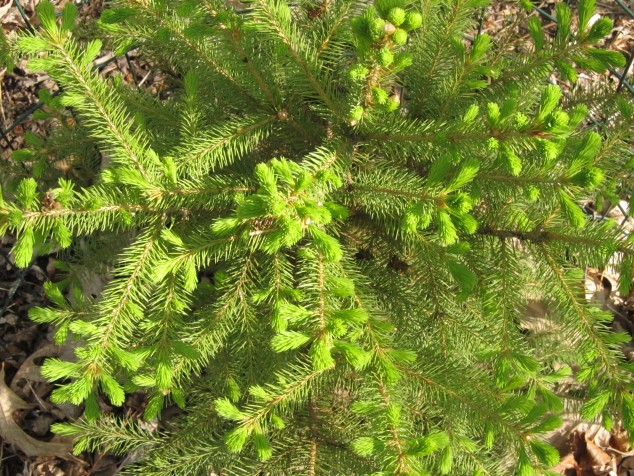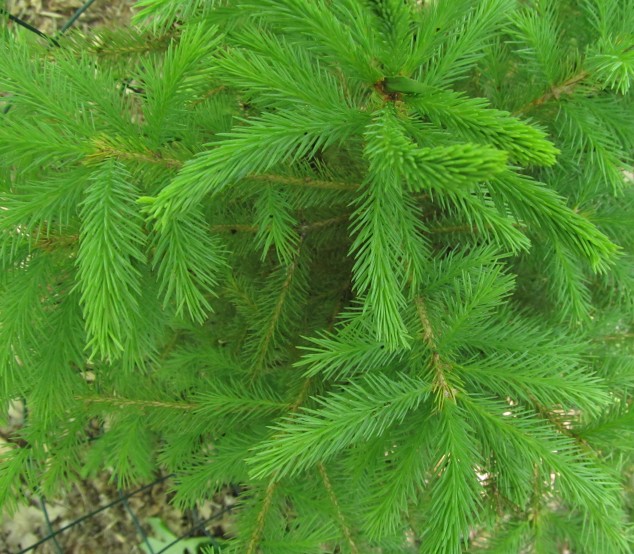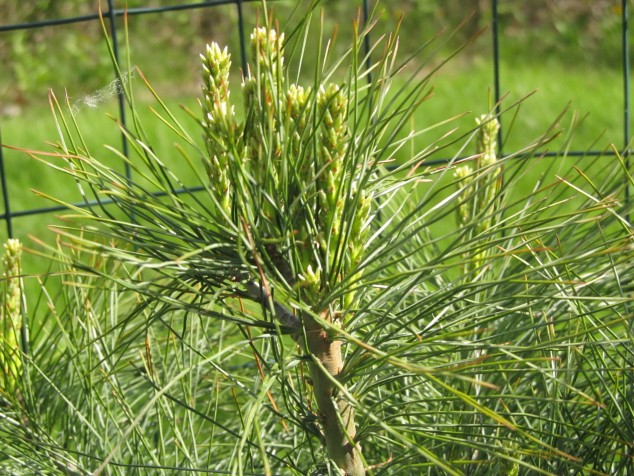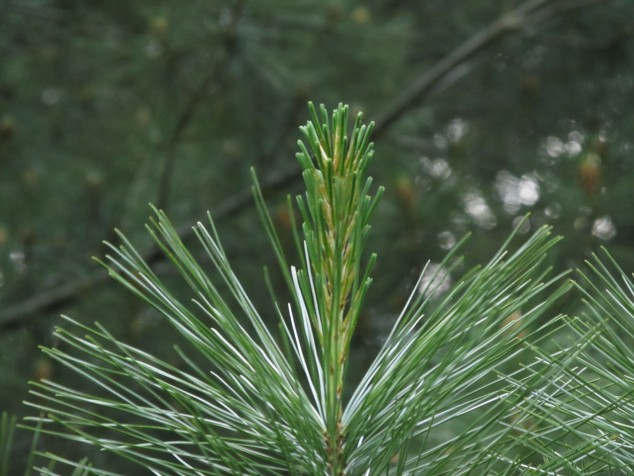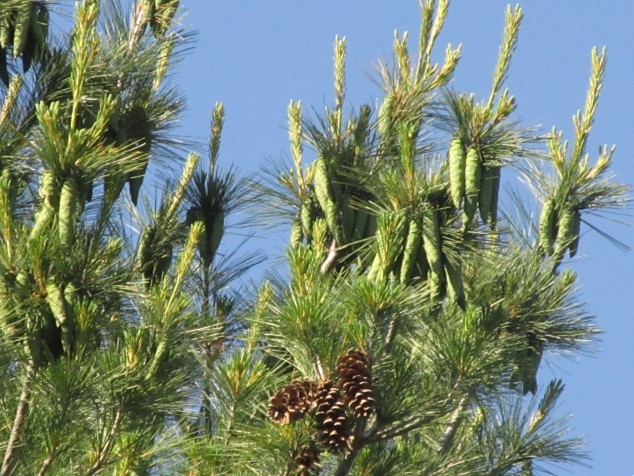Besides our bright, waving, stars and stripes flag, what best symbolizes America–the land of the free and the home of the brave? Yep, the Bald Eagle–our National Bird! Two evenings ago, we went to visit Eagle Park–the home of a pair of these great birds–not far from our house. It was our first outing there for the season. The nearby Sauk River was out of its banks with all the rain that had fallen in the month of June. The prairie surrounding the eagle tree was lush and blooming.
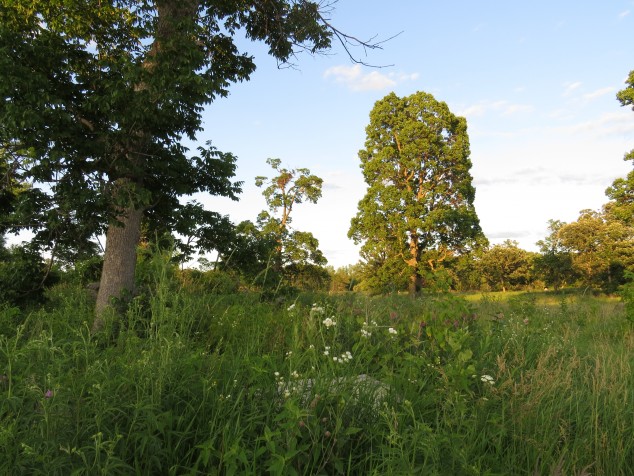 I had another borrowed camera with more powerful zoom (thank you, Aaron), a tripod, a gracious helper (thank you, Chris), and a beautiful evening. (We did, however, forget the mosquito repellant.) When I focused in on the nest, I was surprised to see the two fledglings, nearly as large as a mature eagle! And what a nest! Eagles usually return to the same nest each year, repairing and adding to it. Most are around five feet in diameter, while some get up to eight feet across and are estimated to weigh almost two tons.
I had another borrowed camera with more powerful zoom (thank you, Aaron), a tripod, a gracious helper (thank you, Chris), and a beautiful evening. (We did, however, forget the mosquito repellant.) When I focused in on the nest, I was surprised to see the two fledglings, nearly as large as a mature eagle! And what a nest! Eagles usually return to the same nest each year, repairing and adding to it. Most are around five feet in diameter, while some get up to eight feet across and are estimated to weigh almost two tons.
Now using the term fledgling would imply that the eaglets have ‘fledged’ or left the nest. I don’t think these two have done that yet, though they must be close to the 11-13 weeks when that normally occurs. One eaglet stayed in the nest while the other perched on a branch, flapped his wings, and hopped from one side of the nest to the other. He looks like he is ready to fly!
Eagle chicks grow very rapidly and are almost adult size by six weeks old. By eight weeks, their parents are hunting almost continuously to feed them. This fledgling looked like he was waiting for one of his parents to return with a meal.
But look at how sharp his beak is! Once he has fledged from the nest, he will learn to hunt as the parents still provide food. It will take 4-5 years for the eaglets to mature. Gradually their head and tail feathers turn white while their eyes and beaks turn yellow. Eagles mate for life, and both parents can incubate the eggs, though most often the female stays on the nest, and the male hunts for food for her. After the chicks hatch, one parent stays on the nest or close by.
The sun was getting lower to the horizon but shone on the top of the tree where the young eagles were patiently waiting for the return of their parents.
Then as we were walking back, we heard the fledglings start to vocalize–and there was mother eagle! She came back empty-clawed–no food from this round of hunting.
The eaglet that had been in the nest and quiet the whole time was very excited to see the mother eagle!
Even after that wonderful display, the mother eagle didn’t pay much attention to the young ones.
With the sun going down, we left the eagles and their extraordinary habitat. I was so happy I saw the three of them and was hoping the father eagle had better luck with his evening hunt.
What a symbol of Freedom! We often look at freedom in the context of purely external forces on our lives, but I contend that a majority of the battles that individual Americans face actually come from within. Be proud and celebrate our country’s Independence today, but be brave and give some thought to what it is that is holding you back, what it would take to make your spirit soar!
